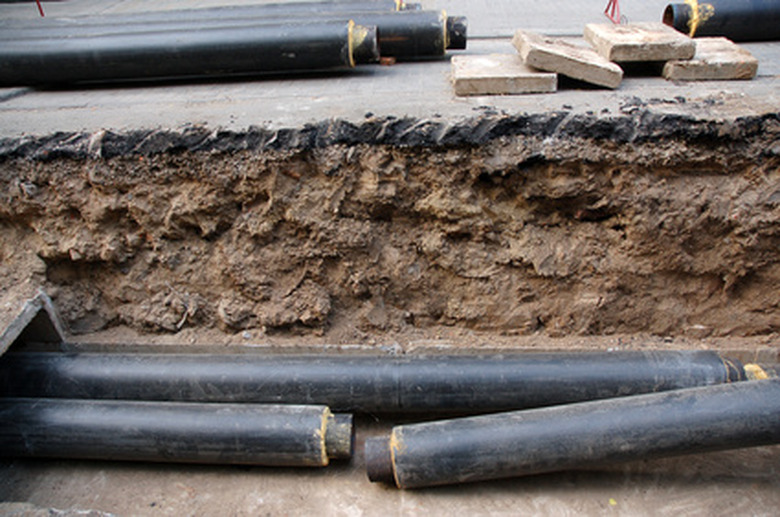How To Figure Out The Percentage Of Fall On A Sewer Pipe
Things Needed
-
Wooden stakes
-
Shovel
-
String
-
String level
-
Measuring tape
The "fall" of a sewer pipe is defined as the vertical distance by which one end (or one end of a section) of the pipe drops relative to the other. It can be expressed as a percentage when divided by the length of the pipe. This is the pipe's slope, or gradient. The two terms are typically used interchangeably on construction sites, which can cause some confusion. Figuring out this percentage is quite easy mathematically, but requires a bit of work to get the numbers necessary.
Step 1
Dig down to the sewer pipe at either end of the section whose percentage fall you wish to measure.
Step 2
Establish a baseline height to measure from. The easiest way to do this is to hammer wooden stakes into the ground at either end of the pipe, then tie a string, and make it taut, between them. Set a string level on the string, then hammer the stakes in until the level's bubble shows that the string is perfectly level.
Step 3
Measure the distance from the top of each end of the pipe to the string above it. Subtract the smaller distance from the larger one. This is the vertical fall of the pipe.
Step 4
Measure the length of the pipe.
Step 5
Divide the pipe's vertical fall by the length of the pipe, then multiply the result by 100 to find the percentage. The fall and length need to be in the same units (feet or inches) for this to work. For example, if the pipe fell by one foot and was 50 feet long, you divide 1 by 50 to get 0.02. Multiplied by 100, that becomes 2 percent, which is your slope or gradient.
